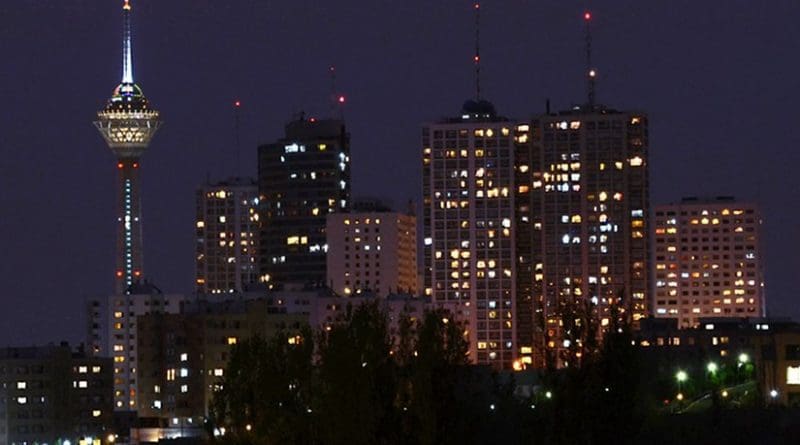Iran’s Protests And Prospects For Macro-Economic Reform – OpEd
The outbreak of mass protests in Iran has definitely jolted the Iranian political system and elicited divergent responses ranging from tacit sympathy to acknowledgement of the legitimate grievances to outright hostility and labeling them as acts of “sedition” etc.
Thus while President Rouhani has sought to utilize the protests as an “opportunity rather than threat” calling for firmer anti-corruption and greater freedoms, the more hard-line politicians have focused on the role of foreign governments in stirring internal discontent and calling for maximum punishment for those apprehended during the protests.
Still, there is a national consensus that economic hardship caused by soaring prices, unemployment, lack of adequate growth, cuts in subsidies, corruption, and so on, has played a key role in triggering the Iranian poor and working classes to pour in the streets and voice their frustrations with the status quo. A candid national review of the underlying causes of popular dissatisfaction is therefore called for and absolutely necessary, which should not be eclipsed or sidestepped due to the heightened national security concerns, otherwise the present manifestations of popular discontent in the streets will likely repeat itself.
Essentially, both the macro and micro causes of discontent can be narrowed down to several key factors, such as relatively high unemployment particularly among the Iranian youth, uneven growth, corruption and nepotism, rising class inequality, sectoral stagnation coinciding with an overall national growth, failure to generate adequate windfalls from the nuclear accord, the discrepancy between the public expectations and the government’s budgetary capability, as well as a host of climate-related maladies such as a growing water crisis, dust storms, untimely bird influenza wiping out a quarter of Iranian chicken industry thus skyrocketing eggs prices, corruption of private credit institutions, etc.
Needless to say, the complex nature of Iran’s economic woes belies any simplistic generalization and it is beyond the pale of this narrative to do justice to them. Suffice to say that the Rouhani government has prioritized development over redistribution, compared to his predecessor, and has also opted for middle class-friendly trade liberalization policies, e.g., mass import of consumer goods, that have benefited the urban population in Tehran first and foremost, one reason why compared to the rest of the country the capital city has been relatively immune from the wave of protests.
The urban bias of the government’s policies has, as expected, exacerbated the rural-urban divide in Iran, reflected in the outbreak of popular discontent in the smaller towns and some villages, reflecting an unhealthy core-periphery chasm at the macro-economic level. Clearly, a comprehensive official analysis of the root causes of the protests must take these macro-economic factors into consideration and provide the necessary adjustments.
But, the problem with the Iranian economy is that in the post-nuclear accord milieu, the government’s dependence on the oil revenues has spiked and, at the same time, its extractive abilities to, for instance, extract taxes remain rather retarded, given the huge volume of uncollected and, in certain instances, uncollectable, taxes, requiring the expansion of the tax net to include the various charity and para-statal organizations that are either tax exempt of effective tax evaders.
Unless the government is able to modernize its tax extraction apparatuses and expand the purview of non-energy exports, it is highly doubtful that it can overcome the known curses of the so-called “rentier state,” which explain a great deal of the poor economic performance of the state, not to mention the absence of an adequate regulatory regime to make (foreign) investment in Iran both low-risk and attractive.
Basically, the Iranian “rentier state” is a welfare regime that is burdened with excess demands coinciding with declining and volatile energy prices, thus introducing a fundamental dilemma of how to maintain political legitimacy by delivering the vast social services — in education, health, basic food and energy subsidies, etc. — without the benefit of matching resources? In essence, this means a perpetual budgetary crisis of the state that has forced the government to reduce certain subsidies, borrowing, issuing government bonds, and tapping into the national saving for the future, without however addressing the endemic problems that require structural economic reform.
The budgetary gaps between the scope of economic needs, such as addressing the water shortages in parts of the country that are attributable to climate-change and increasing aridity of many provinces, on the one hand and, on the other, the limits of revenue-generating abilities of the government indeed form a core root cause of the economic problems in today’s Iran, requiring both political will and correct economic decision-making in order to alleviate them. A new national initiative, comprising of elements of the government and the civil society, committed to reviewing the economic policies and offering solutions is definitely called for, instead of business as usual.

